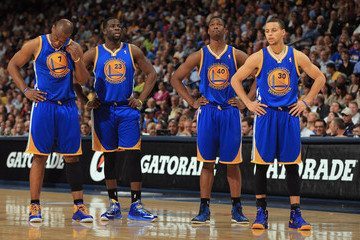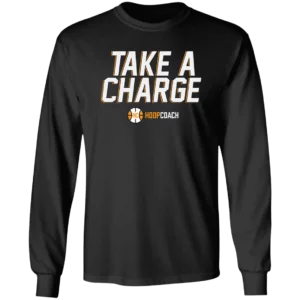 The Golden St. Warriors’ re-shaping of the NBA necessitates a discussion on the concept of what we call “playing positions”. The Warriors literally played most of the last half of the championship series against the Cavs with two small forwards (Harrison Barnes and Draymond Green) and 5 guards (Stephen Curry, Klay Thompson, Andre Iguodala, Shaun Livingston, and Leandro Barbosa). Starting center Andrew Bogut was benched and big men, David Lee and Festus Ezeli, were only spotted minutes to give the rotation guys a blow or to guard Timofey Mozgov (when he played).
The Golden St. Warriors’ re-shaping of the NBA necessitates a discussion on the concept of what we call “playing positions”. The Warriors literally played most of the last half of the championship series against the Cavs with two small forwards (Harrison Barnes and Draymond Green) and 5 guards (Stephen Curry, Klay Thompson, Andre Iguodala, Shaun Livingston, and Leandro Barbosa). Starting center Andrew Bogut was benched and big men, David Lee and Festus Ezeli, were only spotted minutes to give the rotation guys a blow or to guard Timofey Mozgov (when he played).
As this was happening, I thought out loud, “Right now a fair number of NBA centers and center prospects have got to be wondering if more teams will follow this trend. Certainly, this could be worrisome for non-premier big men across the league. Furthermore, if the trend develops in the NBA, can it be far behind at the higher levels of NCAA play?
At the very least, it seems, because of this NBA series, coaches at all levels should be rethinking their playing rotations more than ever before. Certainly, good big men will continue to play at all levels. No coach is going to abandon a good big man because of a trend-even a good one. The big men in the crosshairs are going to be the average and below average types.
In the end, the germane argument in this issue is simply, “Do you play your best 7, 8 or 9 players regardless of position or do you play your best #5, #4, #3, #2 and #1 (if you even have all of them)?
In the Warriors’ case, Coach Kerr replaced a fair player (Bogut) with a very good player (Iguodala). In essence, the Warriors went from small ball to “smaller” ball. He assessed that the advantages of doing so outweighed the disadvantages. Isn’t that what we all do in every phase of the game? That’s really a big part of what we call “coaching”.
The ongoing analysis by coaches has to include the thought of all the mediocre (or less) #5’s and #4’s that are starting out there ahead of above average #3, #2’s and #1’s. Even a potentially scarier thought is all the BACKUP #5’s and #4’s playing behind the mediocre (or less) #5’s and #4’s. Conceivably, there are teams playing four players (2 #5’s and 2 #4’s) in their rotation because of POSITIONS when maybe those four players really aren’t “better” (advantage-disadvantage) than 8 or 9 other players.
So, how do we as coaches solve this dilemma? We coach “players”, not positions. Everyone is coached and expected to defend all types of players, rebound, handle, pass, shoot and score in whatever system we use. (Bob Knight was on to this 45 years ago). Obviously, every player will still have strengths and weaknesses and players will do more of some phases and less of others, but no one will have the crutch of not being expected to do all tasks adequately. At the same time, all players will be “enabled” to grow to their potential because they haven’t been defined arbitrarily by a position.
No one really knows how pervasive “smaller ball” will get but the way in which the Warriors dictated personnel, tempo and style of play this past week should certainly get us all thinking.
What is your approach? Let us know in the comment section below.



Bum Phillips said “He can take his’n and beat your’n and take your’n and beat his’n.” I believe one job of a coach is to look at the materials he (she) has available and put them in the best position to win. This means being knowledgeable enough to teach the game to players, develop their skills, and put offensive and defensive systems in place that showcase their assets and hide their deficiencies, Coach Kerr did this with the Warriors. He elevated Harrison Barnes because Barnes was a better fit with the lineup (not seeking his shot, for one thing) and brought the versatile Iguodala in wherever needed. Coach the players; be knowledgeable enough to change to showcase their skillset.
You do both! Coach players and coach positions. Unfortunately, coaching one or the other limits the players’ potential and growth. It’s already a fad in the NBA to play quasi zone with bigs running up the lane to stop guard penetration (dumb) in a league where 80% of the players have no “mid-range” game. It would be better to leave the bigs (5) in the low post and let the low % players come to him. The uncharacteristic number of “offensive fouls” by EVERYONE in the lane is all the proof you need. Defense? is non-existent in the NBA! Proof, google Scottie Pippen “complete player 1 and 2 videos… then pull up his Power and Grace videos … the pull up his Ultimate Defender videos and try to argue. There are four rules of great defense and Scottie Pippen exhibited them all. Funny how no one can tell me what they are!
http://www.defend-rebound-finish.ning.com
http://www.lightsoutshootingcamp.ning.com
http://www.lightsoutshootingcamp.com
This is the foundation ‘theory’ of developing players in Australia … where we have a population of only 23 million yet our women are ranked #2 with FIBA. Having coached kids from 5yo beginners to WNBL I can see the benefits of every player having sound fundamentals from an early age because the tall younger kid might stop growing, and others might grow beyond expectation. So while height might be a deciding factor in what ‘position’ a player might be used, I once had a 6’9″ player and she could shoot the 3 pointer beautifully so we had to incorporate that into our offense. Its all about playing the game as a team, so a coach needs to work with the dynamics of individual players that combine well together.